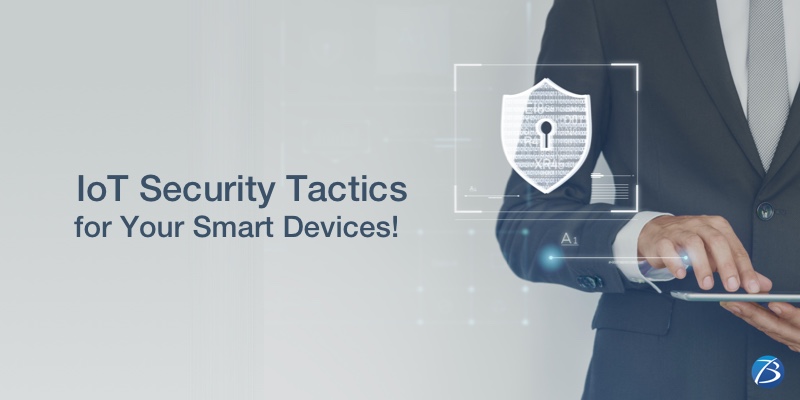All-inclusive Insights on Beacons: Types, Advantages, and Use Cases!


Beacons happen to be an integral component of IoT technology and are transforming the functioning of diverse industrial domains at a fast pace. The concept of Beacon was launched in 2013 by Apple and has progressed a long way since then. Take a look at these amazing stats concerning beacon technology.
A 2020 report by Statista states: “The market value of Beacons technology was 519.6 million USD in 2016 and is expected to grow at a CAGR of 59.8% such that the market value will shoot up to 56.6 Billion USD by 2026.”
This post takes you on an insightful journey into the world of Beacons! So, let’s explore comprehensive aspects of the Beacon technology – types of Beacons, benefits of Beacons, IoT applications using beacons, and many more.
What are Beacons?
A Beacon is a small wireless device that continually transmits a radio signal displaying its presence with its unique ID. This signal is captured by nearby smart devices, mostly smartphones that use BLE (Bluetooth Low Energy) technology. The smartphone device detects the signal sent by the beacon by reading its identification number (ID) and then calculates how far away the beacon is located. Based on this information, an action is triggered on a mobile app compatible with a beacon.
Beacons utilize proximity technology for detecting human presence within close vicinity and then trigger pre-set actions for delivering contextual, informational, and personalized experiences. As such, beacons are employed in IoT (Internet of Things) networks as well as outdoor/indoor positioning systems.
Types of Beacons
There exists a wide variety of beacons. Beacons vary as per their size, use cases, battery life, and degree of resistance to exogenous factors. Take a look at the different variants of beacons that emerged to accommodate diverse business requirements!
- Standard beacons are devices sized like a Wi-Fi router or even smaller and are used for indoor tracking and proximity solutions.
- Small-sized portable beacons that are as big as a large sticker or a credit card are utilized for proximity solutions and asset tracking.
- USB beacons are portable, small in size, and can be promptly deployed. These are used for asset tracking and proximity solutions.
- Sticker beacons happen to be the smallest beacons available and are used for asset tracking.
- AI-empowered beacon is a machine learning-empowered device capable of detecting various gestures as well as movements.
- Video beacons refer to the devices that are plugged within the back of a screen for delivering digital signage and providing contextual visual information. For instance, the users of a beacon-enabled app receive personalized offers when they appear near the display screen of an eatery.
- Dedicated beacons are devices that are resistant to exogenous factors like water, dust, shattering, and antistatic/UV. These serve as proximity solutions in harsh eco-systems and are employed for indoor tracking.
- Parent beacons are as big as Wi-Fi routers. They are used for tracking other beacons, gathering data, and then storing it in the cloud, etc.
The Basic Components of a Beacon and their Roles
A beacon consists of a battery-powered small ARM computer with a CPU and a Bluetooth Smart connectivity module. And, for running this module, firmware is installed within beacons. Its computing power is limited as the maximum Bluetooth Smart playout is only 257 bytes – inadequate for inserting media content. Therefore, it can be used to encrypt a beacon’s ID and process sensor data. There exists a small antenna within the CPU which is designed for broadcasting electromagnetic waves with a length and frequency of 2.4 GHz radio waves. On account of the RSSI (Received Signal Strength Indicator) estimate, this technology is useful for location and mapping services.
The eco-system of the beacon technology consists of an SDK, beacon devices, and back-end management tools. Also, noise-reduction algorithms are present to smoothen the signals and lead to fairer outcomes.
How does a Beacon function?
A beacon continuously broadcasts an identifier – a unique ID number. Once, a mobile device picks up the identifier and gets connected; the beacon accomplishes the function that it has been programmed to execute. When a user enters the zone where an IoT network containing beacons or a positioning system is established; they receive a code through a text message on their mobile devices. Such a message can be sent only via a mobile app in the form of a push notification.
Beacon IoT apps are installed within smartphone operating systems following any one of the beacon standards – iBeacon standard for Apple smartphone devices: iOS7 and higher versions; and Eddystone standard for Android mobile devices: Android4 onwards. Lastly, the smartphone user must give permission for enabling beacon-based notifications and using a particular positioning system.
Beacons: Use Cases

Smart Shelves
Beacon-infused smart shelves assist retailers to comprehend consumer preferences, identify customer demands, and enable speedy and effortless tracking as well as stock control.
Such shelves are powered with an RFID (Radio Frequency Identification Reader) that can be embedded either into the shelf or placed over/below/behind the shelf. This reader is used for scanning the targeted commodities placed on the shelf and then notifying the backend system of those items.
Indoor Tracking
Google maps, the most commonly used tracking and navigation tool possesses certain limitations: It’s incapable of tracking within concrete areas like buildings and fails to provide point-to-point navigation across short distances. All these shortcomings of Google maps are fulfilled by beacon-powered solutions used for indoor tracking in areas such as malls, exhibitions, hospital spaces, resorts, hotels, huge organizations, airports, etc.
Beacons are installed within the building which sends Bluetooth signals to the users’ smartphones such that the positioning data is directly displayed on the mobile screens. Here, the signal strength measurement is used for localization. Moreover, the device can transfer data to platforms where the collected data is intelligently processed. When the position is determined the accuracy of a client-based process is one to three meters and the range is up to three meters. It detects the present floor too.
Implementation in the Educational Sector
This technology facilitates the functioning of educational institutes such as colleges, universities, training institutes, etc. Beacon devices placed in each class can replace traditional notice boards used for broadcasting important information like administrative posts, time-tables, upcoming activities, etc. to the students via push notifications; conducting automatic attendance using timestamps; and many more.
Healthcare Sector Implementation
Coming to the healthcare sector, beacons embedded within mobile devices of the medical facility enable efficient equipment tracking. Moreover, a beacon can load the patients’ medical records/history into the doctor’s iPad immediately after the practitioner enters the patients’ room and remove those records after the doctor leaves the room. Beacons are also immensely useful in helping patients as well as visitors to navigate through large corridors of hospital spaces by providing them location guidance through maps.
Benefits of Beacons
Collection of advanced Customer Data
The positional accuracy of beacons allows retailers to collect reliable information about consumer in-store behavior. This data plays a crucial role in enhancing your in-store layout and product listings, improving your customer experience, designing effective marketing campaigns, and thereby accelerating in-store conversions.
Enhanced Offline-visibility concerning Google Ads
Business brands that connect their beacon signals to the Google Ads account gain handy insights about the offline activity of the searchers and track their in-store visits. Tracking the interaction points of the visitors who have clicked your digital ad campaigns provides one an idea of the effectiveness of your campaign and helps you to identify the areas of improvement so that they can tailor their marketing strategy accordingly. This is how beacon-empowered online marketing strategies are directly linked to offline attribution.
Advantages for Consumers
Beacons allow consumers a personalized interaction during their shopping experience thereby improving the UX to a great extent. Targeted/customized ads from their preferable brands provide customers the flexibility to choose wisely while offline as well as online purchasing and hence, helps in building familiarity, trust, and security.
Final Verdict
Tech giants like Google and Apple are promoting the Beacon technology in full swing and the outcome is obvious – businesses across various domains are leveraging its promising potential. Would you also like to reap the benefits of this amazing technology? Well, reach out to Biz4Solutions, a prominent offshore software development services in India and U.S.A, for our customized software solutions using this beacon technology.



